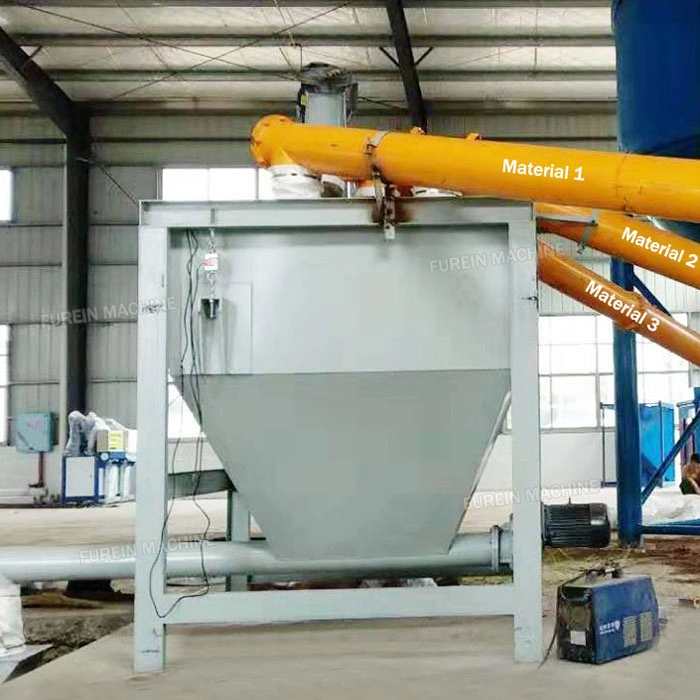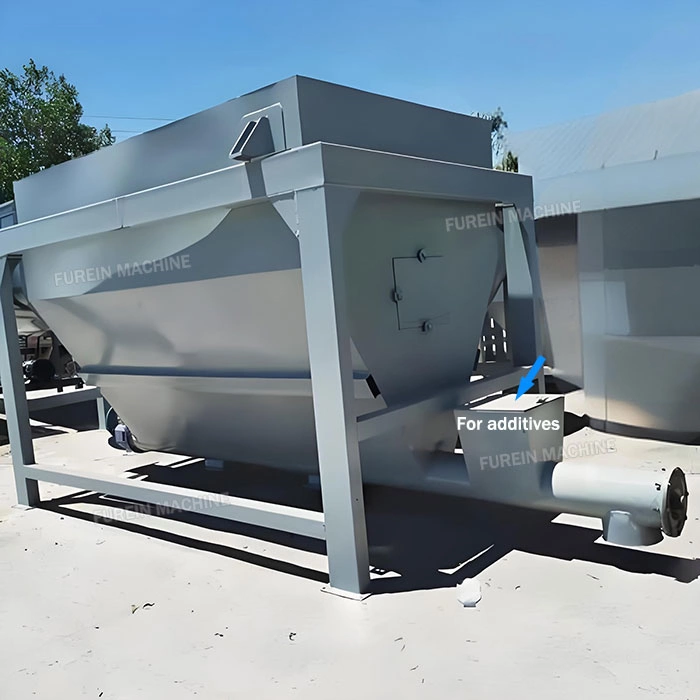Dry mortar is produced from various materials according to different applications, formulas and corresponding processes. Among them, according to the process requirements and the formula ratio of multiple materials, accurate dosing is the technical key to ensuring the quality of the mortar and the regular operation of the dry mortar production line. In this article, I will mainly discuss the measuring and weighing system of dry mortar production line.

Measuring And Weighing System Of Dry Mortar Production Line
There are 3 screw conveyors for feeding material, and the bottom screw conveyor for discharge material.

Measuring And Weighing System In Dry Mortar Production Line
If you want to add additives manual, Furein team can add a feeding port on the discharge conveyor for additives.
What is the measuring method of dry mortar production line?
1. According to the project's needs, choose the appropriate measuring equipment, use the load cell, flow meter, etc.
2. Determine the proportion of powder to be measured.
3. Add the required proportion of powder into the equipment step by step to ensure that the amount of powder added each time is accurate.
4. Total quantity control: You can set the measuring control meter or adjust the equipment operating parameters to ensure the accuracy of the total quantity measured each time. The whole quantity control button is installed on the PLC electric control cabinet and other control systems on the dry mortar production line.
What are the components of the weighing system for dry mortar production line?
Generally speaking, Furein Machinery's dry mortar weighing system consists of three parts: a load cell, junction box, and meter.
What do I need to consider when choosing a weighing system?
You need to determine the technical program according to the process design and production requirements. How to quickly configure a weigh system, including the charging sequence, metering bin material, volume, bin cone angle, inlet and outlet valves, soft linkage, load cell type and specification, installation and adjustment methods, and instrumentation for metering dosage display and control.
What should I pay attention to in metering and weighing?
The raw material bin is equipped with upper and lower material level meters to control the starting and stopping of the feeding device. Ensure sufficient material can be continuously supplied to the feeding equipment.
Dry mortar with more raw materials, raw material silo number is also more, conveying feeding distance is farther, applicable to the closed screw feeder as a feeding device.
Flow characteristics of the material generally use a large screw feeder for fast feeding; a smaller screw feeder for additive feeding. The two's working time and working mode, the early closing time, determined in the field commissioning.
To ensure continuous and stable feeding, the screw feeder speed should not be very high, and the pitch and diameter ratio should generally be ≤ 0.5. As a fine-feeding screw feeder, it is best to add a set of frequency converters close to the rated amount of time; the speed gradually slows down to stop. In this design scheme, feeding accuracy generally reaches ± 0.3% or more.
To ensure the production beat, as a fast feeding spiral feeder should be more giant, its feeding capacity should not exceed 130% of the rated amount.
Due to the pulsating nature of the screw feeder discharge, the screw feeder may collapse after stopping and affect the dosing accuracy. At the outset, there should be a quick shut-off valve, and the shut-off valve will be closed quickly when the screw feeder stops.
The raw material silo outlet and metering batching silo inlet level distance is close to the feeding device. It can be used as a precision compartmentalized wheel feeder group and a smooth chute as a feeding device.